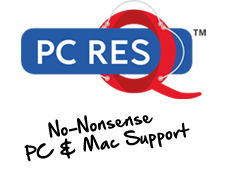I’ve never been a convincing liar.
My facial expression gives it away so easily.
All of us tell a sweet little lie now and again, but my classmate Matthew took it to a whole new level.
This was in the class of 1986 when I studied a computer studies course in Llanelli, South Wales. Proved to be a worthwhile investment long term.
Every time we’d share a story about what we’d done or seen, Matt would soon chip in and say he’d done it bigger, faster or more often. One story took the biscuit; he claimed that he’d been involved in 96 separate road accidents. Absurd I know, but in his world he was totally convinced.
All of us took his stories with a pinch of salt and once day Matt was involved in a fairly major car accident with me as the driver! Never seen a passenger look so white in my life. Not the look of someone that had been in 96 incidents to date anyway.
So why am I sharing this story?
Well this got me thinking…
In my college years, there was no email, no social media and no internet. We got the news from newspapers, TV and radio, and overall the stories were factual and true. Except for the Daily Star! We used to buy this every week to have a good laugh at the ridiculousness of the stories. Great read when you’re 16!
The point was that I knew the stories were made up but in recent times the landscape has changed.
Fake news is big news; this really took off at the recent US Presidential election with incorrect stories to try and discredit the opposition.
And fake email has been doing the rounds for years, most commonly known as spam. Oh and by the way – the email I sent out on Wednesday this week was genuine. I got a number of queries back asking if it were real as it didn’t look my usual way of writing and the link looked a bit dodgy. The link was created using my marketing software and the email was fairly short and sweet to the point due to my limited time but recognised the importance of getting it out to you.
Anyway, back to the topic at hand.
To help you spot a Matt in the online world, here are a few pointers. You might have already seen these tips in your Facebook news feed.
> Be sceptical of headlines. The headlines of fake news stories are often catchy, and contain lots of capital letters and exclamation marks. If claims in the headline sound unbelievable, they may well be.
> Look closely at the URL. Many false news stories mimic authentic news sources by making small changes to the URL. You can go to the site to compare the URL to established sources.
> Check the source. Ensure the story comes from a source with a reputation for accuracy. If the story comes from a site you have not heard of, check their “About” section to learn more.
> Watch for unusual formatting. Many false news stories often contain spelling and grammar errors, as well as an awkward looking layout.
> Check the photos. False news stories often contain manipulated images or videos. Sometimes the photo may be authentic, but taken out of context. You can do an internet search of the image to find out where it came from.
> Check the dates. Fake news stories may contain timelines that make no sense, or event dates which are wrong or have been altered.
> Check the evidence. Check the author’s sources to confirm they are accurate. Lack of evidence, or a reliance on unnamed experts may indicate false news.
> Look at other reports. If no other news source is reporting the same story, it could indicate that it is false.
> Is the story a joke? Sometimes false news stories can be hard to distinguish from humorous articles. Check whether the source is known for parody, and whether the story’s details and tone suggest it may be just for fun.
> Some stories are intentionally false. Think critically about the stories that you read, and only share articles which you know to be credible.





